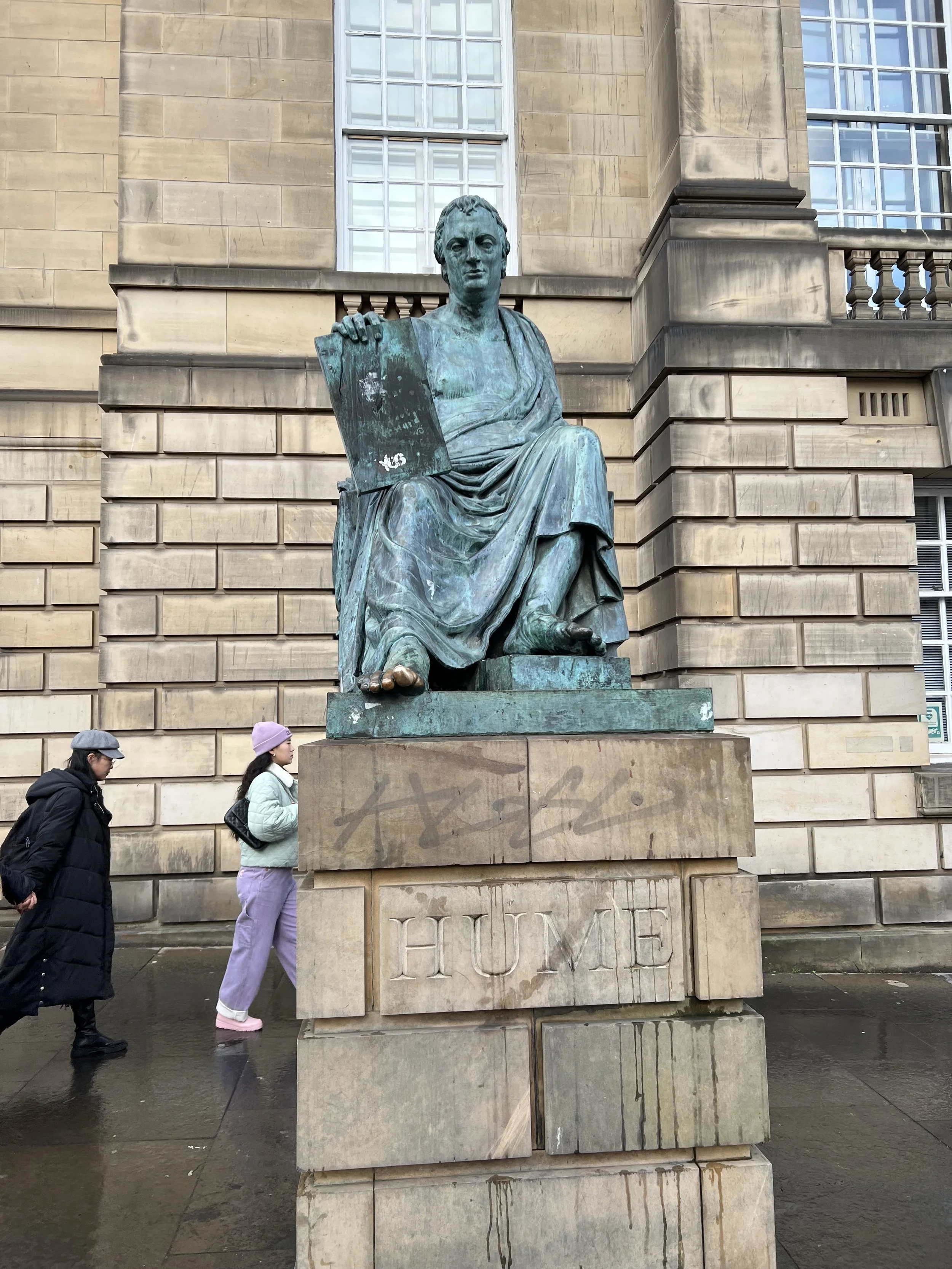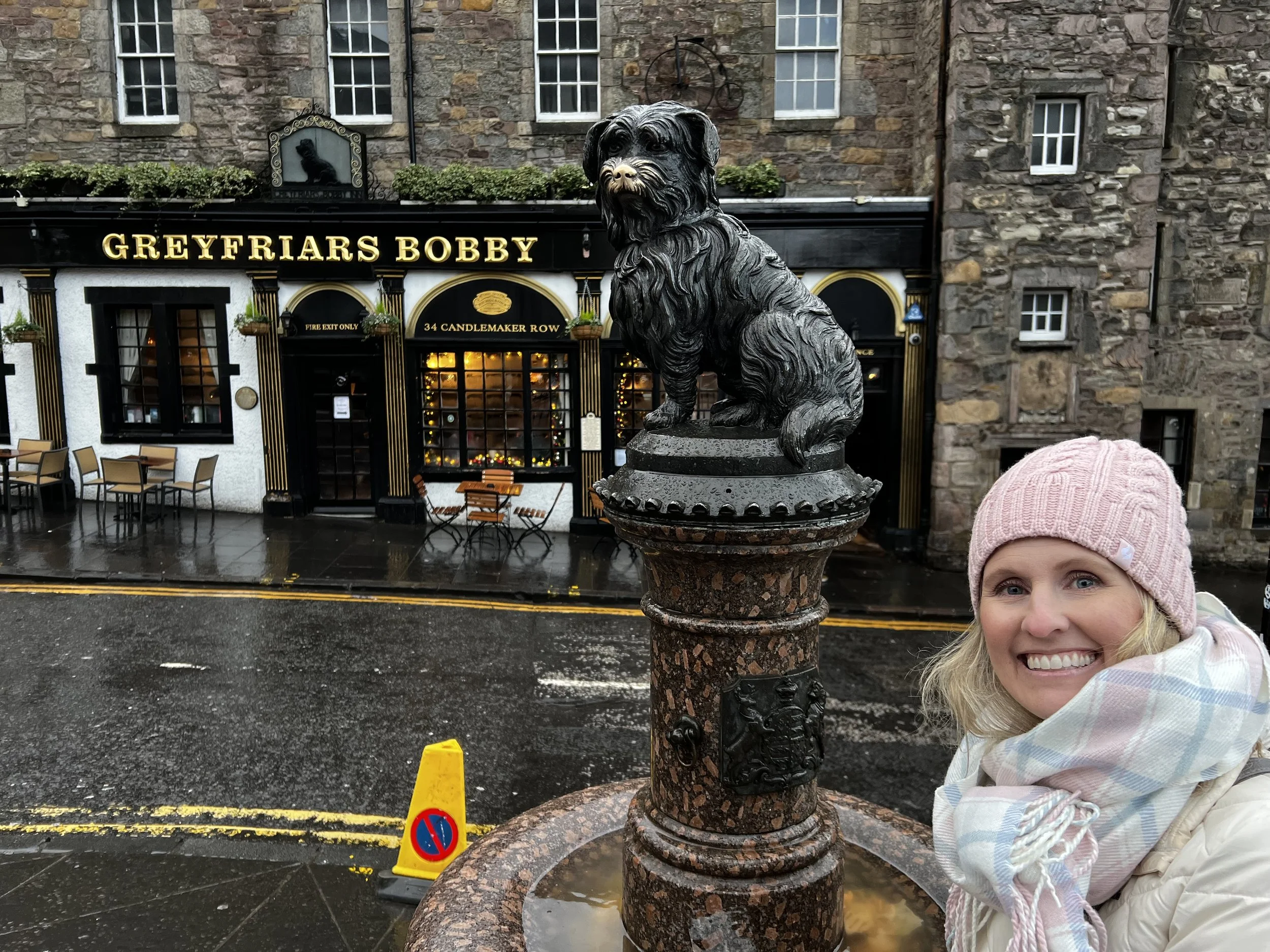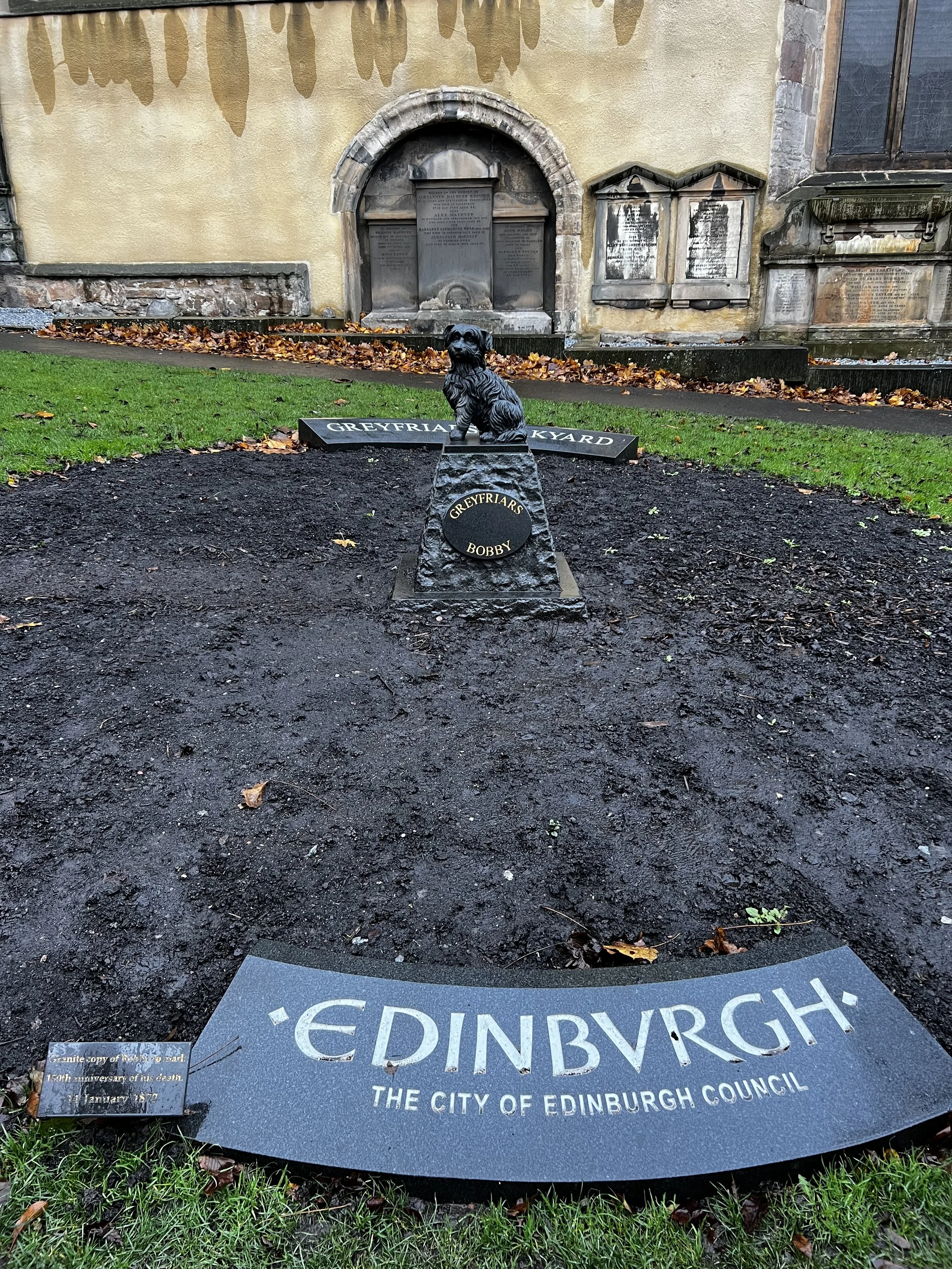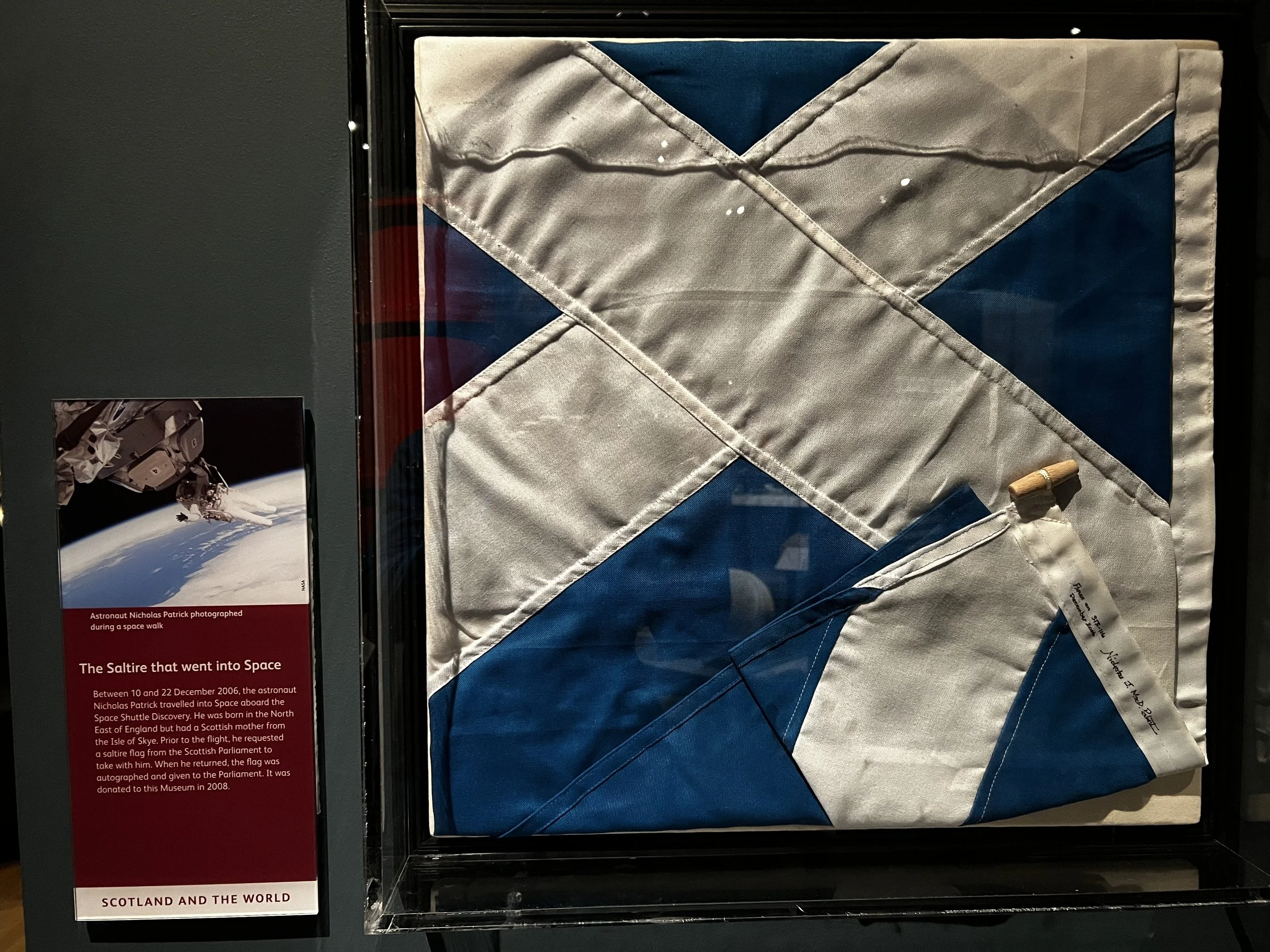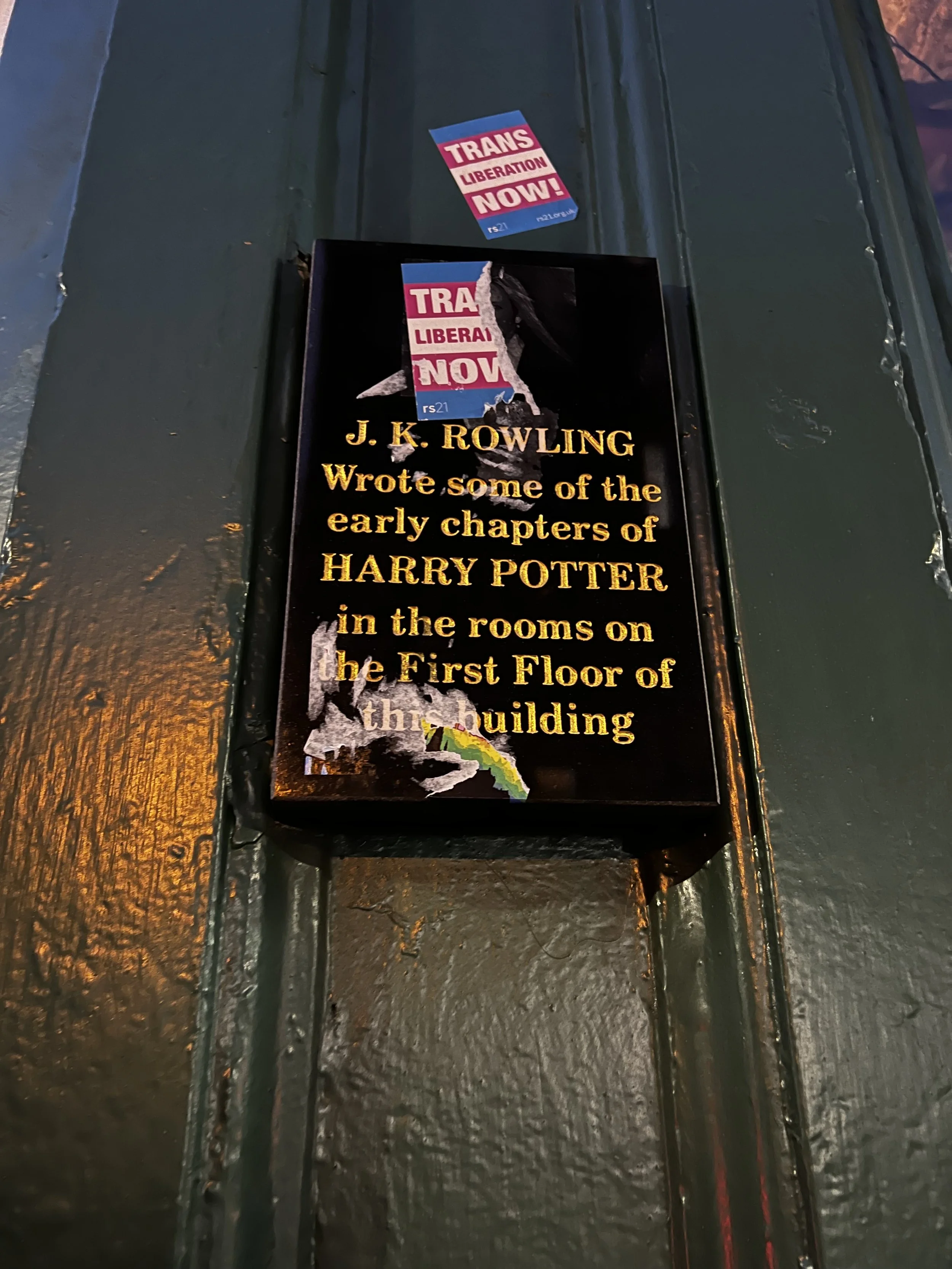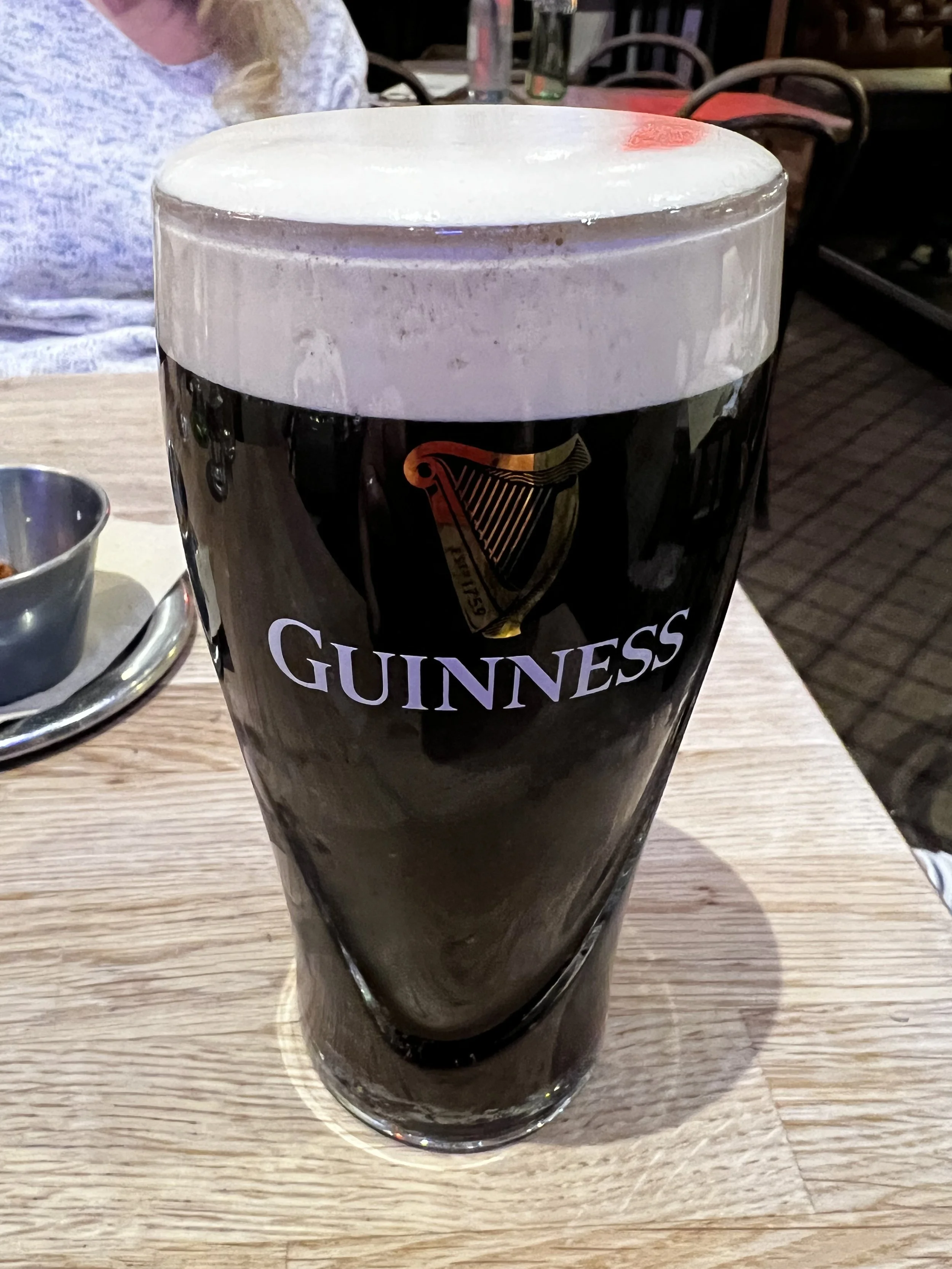Greyfriars Bobby
“There’s no leaving Edinburgh, No shifting it around: it stays with you, always.”
Here lies John Gray—who came to Edinburgh in 1850 and worked for the Edinburgh City Police as a nightwatchman. According to records, policemen were obliged to have watchdogs with them. Bobby, a Dandie Dinmont Terrier (or perhaps a Skye Terrier), would follow Gray while he was at work. John died on 15 February 1858 and was buried here in Greyfriars Kirkyard in the Old Town of Edinburgh.
And here lies Greyfriars Bobby—the terrier who, after John died, then became known locally for spending the rest of his life sitting on John’s grave. Bobby is said to have sat by the grave for 14 years, dying in 1872. He was buried here, just inside the gate of Greyfriars Kirkyard, not far from John Gray's grave.
The headstone was erected by The Dog Aid Society of Scotland and unveiled by the Duke of Gloucester on May 13, 1981. The monument reads, "Greyfriars Bobby – Died 14 January 1872 – Aged 16 years – Let his loyalty and devotion be a lesson to us all.”
Here sits the famous statue of Greyfriars Bobby, just outside the gates of Greyfriars Kirkyard. A year after Bobby’s death, the English philanthropist Lady Burdett-Coutts was charmed by the story and had a drinking fountain topped with Bobby's statue erected to commemorate him. Today people rub Bobby’s nose for good luck.
Just a side note: this is the statue of David Hume on the Royal Mile and his right big toe sticks beyond the plinth. Like rubbing Greyfriars Booby’s nose, it is also considered good luck to rub Hume’s toe. We’re a strange species.
In 1867 the lord provost of Edinburgh, Sir William Chambers, who was also a director of the Scottish Society for Prevention of Cruelty to Animals, paid for Bobby's license and gave the dog a collar, now in the Museum of Edinburgh. In the background is the Greyfriars Bobby pub, located on the ground floor of the Candlemaker Row's houses.
In 2021, this new monument to mark the 150th anniversary of the dog’s death was placed close to the east wall of Greyfriars Kirk. This was ordered by Robbie Beattie, a senior manager with Edinburgh City Council's Bereavement Service.
The truth of John Gray and Greyfriars Bobby will never be fully known. Yet myth and story fill our days, and they inspire us. In the end it is safe to say Bobby was a very special and devoted dog, and it’s heartwarming (especially on such a cold day) to think about that special relationship people share with their pets. Three cheers for Greyfriars Bobby! (And God bless terriers!)
Here are a few other quick fun pictures from today (Dec 5): the famous George IV Bridge as seen from the Greyfriars Kirkyard.
A cool lintel found on Advocates Close, right off the Royal Mile. The initials are of the husband and wife and the date when they established this as their home.
From inside the National Museum of Scotland. The first Kay gyroplane was designed in 1934 by David Kay and John Grieve of Scone and built for them by Shields Garage in Perth. A more advanced second prototype, the aircraft preserved here, made its first flight at Eastleigh Aerodrome in 1935.
The Kay 33/1 was the first rotorcraft to use variable incidence rotors (i.e.: collective pitch control), a feature that would become standard on all helicopters.
Scottish flag (Saltire) that went into space.
Dolly the Sheep—the most famous sheep in the world. Born in 1996, she was the first mammal cloned from an adult cell. Dolly was the only live lamb from 277 eggs used in cloning.
Necklace worn by Mary Queen of Scots.
A 1823 law saw the number of crimes punishable by death in Britain drop dramatically, but since medical and anatomical schools were only legally allowed to dissect the bodies of those who had been condemned to death, this led to an extreme shortage of dead bodies available.
However, the financial compensation offered by medical schools meant that some unscrupulous types soon found a way around this shortage of bodies, leading to a rash of grave-robbing by those known as resurrectionists.
Instances of grave-robbing became so commonplace that relatives were known to watch over the recently dug graves of their dearly departed and watch towers were installed in cemeteries across the land. This metal coffin was built to ensure grave robbers could not steal the body!
For all you Outlander fans, a cool map showing from where all the clans originate. Fraser looks a bit worn out, probably from so many people touching it!
This plaque is found on the former site of Spoon café. The café was identified by J.K. Rowling in a BBC documentary as the place she had written “huge parts of the book.” The small plaque rests below the window where she once sat. You may recall Rowling came under fire in early June 2020 for controversial tweets she posted about the transgender community—thus the stickers on the plaque.
You just can’t drink a Guinness this good in the USA. Better still, can’t wait to have one at the actual factory in Dublin!!



